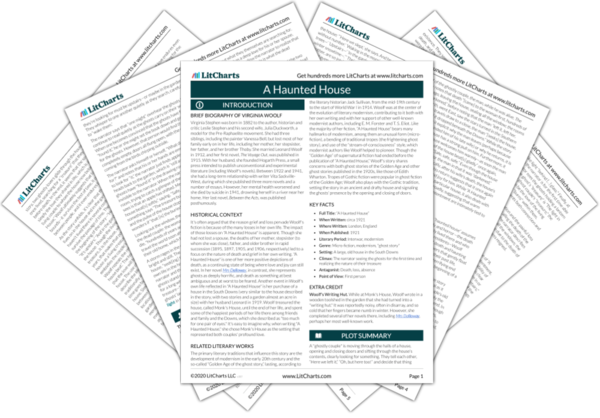The first appearance of the house's refrain, "Safe, safe, safe," affirms that the ghosts are not a danger, and that the house is a place of safety and comfort. In a similar vein, that the house has a steady, gentle pulse links the house with a heart, and, by extension, love. The detail that the treasure was "buried" suggests that it was perhaps "buried" with the couple when they died and thus was something they could only access in life—which would explain the fruitlessness of their search now. Later, the story depicts the ghosts holding a lamp, so the mention that “the light had faded” suggests that the ghosts, lamp in hand, are moving down the hall to a different side of the house.
